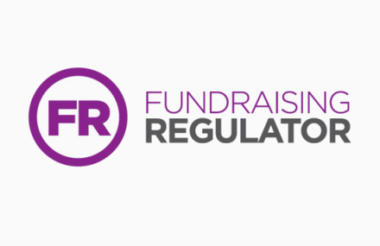Last week, the Fundraising Regulator published the results of an independent review into one of its core services, the Fundraising Preference Service (FPS). The FPS allows people to opt-out from multiple charities’ fundraising communications by filling in a single online form or making a phone call.
While the review found that the service is very important for a small number of people and its users find it easy to use and effective, it also found that it is probably costlier that it needs to be, and recommended a series of changes.
A (working?) compromise
Some of the issues with the FPS go back to when it was introduced in 2017. The FPS was recommended by the cross-party review into fundraising regulation chaired by Sir Stuart Etherington in 2015, after a series of high-profile fundraising stories in the media at the time. But the FPS was initially meant to be a “big red button” that would allow people to stop all types of communications, from all charities.
However, the Fundraising Regulator later deemed this solution unworkable, on the basis that it would be costly (there are about 160,000 registered charities in England and Wales after all) and would stop communications even from charities people might still want to hear from.
As it is, people can use it to stop communications from three charities at a time (if requesting online) or 20 charities (if requesting over the phone). The vast majority of requests (96%) are made online. Charities that receive an FPS suppression request have to sign up to a dedicated portal, download the request and apply it to their database.
What works and what doesn’t
The system undeniably has some advantages, the most important one being that it allows someone else (a carer, a family member, etc) to stop fundraising communications directed to a vulnerable person. Some 31% of all suppressions since the FPS launched were made on behalf of someone else.
Using the FPS is easier and less time-consuming than contacting charities one by one for people in such circumstances. That said, some charities also said in the review they would not accept a third-party request unless the person had power of attorney over the supporter – there is no clear guidance to charities from the regulator on this (something that the review advises the regulator to fix).
On the other hand, the main issue with the FPS is that it is undeniably expensive, while take up is very low. Between its launch in 2017 and June 2020, it was used by about 11,000 people to make 34,000 suppression requests.
As the Fundraising Regulator is funded mainly by charities paying an annual levy, the FPS is ultimately paid for through charity money. According to the organisation’s annual accounts, in 2018-19 the FPS cost £376,000 to run, or about 19% of the organisation’s overall expenditure. For the same year, this works out to about £133 per user. This is both because the service was originally set up expecting a much higher inflow of requests, and because there are fixed costs that are difficult to bring down.
An insurance policy for the sector
However, there is more to the FPS that its transactional value. One anonymous sector stakeholder in the review called it an “insurance policy” for the sector. They said: “So if the FPS wasn't there, and fundraising went through another series of scandals that led to a 25% drop in donations over the course of the year, is it valuable to have an insurance policy that costs £300,000 a year that might protect millions or hundreds of millions of public donations? It's very hard to make that judgment.”
Peter Lewis, CEO of the Chartered Institute of Fundraising, made the same point: “What would be the cost of another Daily Mail front page compared with the cost of the FPS?”
It is also true that the regulator has been trying to cut costs in the past years, for example by bringing the call centre in-house. For 2019-20, it planned to spend £311,000 on the FPS (£260,000 to Syrenis, the external contractor providing the platform, and £51,000 on internal staffing costs).
As for the low take up, multiple factors can explain this, including improved fundraising practices, GDPR giving people more control over their data and the fact that many people who wanted to use the service may at this point have already done so.
But one of the FPS’ main problems was always public awareness, and indeed if you Google “stop charity mail”, you’ll only find the FPS website on page three (although you do come across it mentioned on other websites before that). So among other more substantial changes, the review recommends that the regulator fixes its search engine optimisation (yes, really).
Recommendations
This mild tech blunder aside, the review’s most eye-catching recommendation is that the regulator tries to cut the FPS’ costs by aiming it primarily at protecting people in vulnerable circumstances through a “minimal viable set up”.
The review singles this out as the FPS’ most important function, although it is unclear whether times have changed enough that charities could now be taking care of it themselves.
Daniel Fluskey, head of policy and external affairs at the Chartered Institute of Fundraising, said: “This was always the number one driver for me of the value of the FPS. However, much has changed since its introduction - charities and partners have improved policies, training and procedures in responding to people in vulnerable circumstances. And the control people have over their communications has been strengthened.
“I saw this as the most valuable part of the intention behind the FPS in providing reassurance for the public and a quick and efficient service, but now that charities have improved their work in this area it is again worth reviewing the specific extra benefit and value that is gained by having this delivered by the FPS, rather than directly with the charities concerned.”
The review also recommends that the maximum number of charities that people can request to stop receiving communications from through a single online FPS request increases to 10.
In the 70-page-long document, something else that catches the eye is that while users are mostly happy with the FPS, charities aren’t that much. Out of 110 charities that have used the FPS and were asked how satisfied they are with it, a total 21% said they are somewhat or very dissatisfied, and 35% ticked “neutral”.
This has to do with costs but also with other issues, some of which the review also addresses in its recommendations. For example, the regulator is asked to issue guidance on what charities are supposed to do when they receive an FPS request from someone who isn’t in their database, and to consider adding a box for users to tell charities the reason why the FPS request was made.
What now?
Those who were hoping this review would mean the end of the FPS will probably be disappointed. The review does not go anywhere near suggesting to scrap it, and in fact concludes that it “is an important part of the support structure that helps to maintain public trust and ultimately strengthen fundraising”.
But the Fundraising Regulator has taken on board all the review’s recommendations, which should result in some pretty big changes to make it simpler, cheaper and more targeted. The regulator said it is “currently working on a plan to gradually improve the FPS over the next financial that ensures minimal disruption to users”. It also said some of the changes will require talking to the rest of the sector.
The Chartered Institute of Fundraising is keen to wait and see what will happen. Fluskey said: “It does seem right to review the costs of the service, given levels of take-up and how communications have changed since FPS was introduced.
“But the driving issue should be value for money - does the service provide value back to the charity sector and the public for what it costs charities to fund through the levy and registration fees?
“Proportional regulation includes delivering at value for money, so we look forward to seeing how the Fundraising Regulator reviews the costs of the service.”












